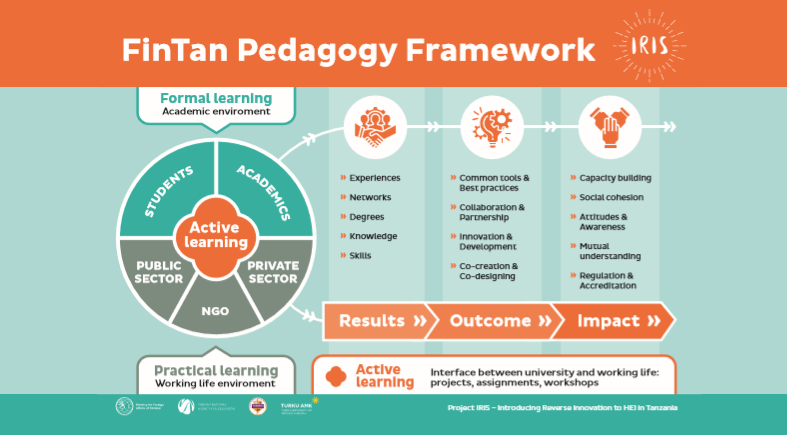Developing the FinTan Innovation Pedagogy Model for Tanzania Higher Education Institutions

By Getrude Ntulo and Markku Rajala.
Higher Learning Institutions all over the world are considered to be the industry for manufacturing national think tanks and skilled individuals who will be pioneers to foster any national development agenda. Higher Education Institutions are expected to prepare innovative, competent, mult-skilled, critical thinkers, and team worker graduates with an entrepreneurial mindset to work with the community. However, this has not been the case in recent years as literature, statistics, employers and the community at large point their fingers to Higher Education Institutions and their teaching and learning processes. Another problem is the rise of unemployed graduates who cannot either employ themselves or employ others. This situation raises a number of questions and one being the type of HEIs curricular and the type of pedagogy uses in daily teaching and learning.
Tanzania National Development Agenda, Sustainable Development Goals (SDG); National Development Vision (TDV) 2025-35;The second National Strategy for Growth and Poverty Reduction and the current Five Year Development Plan (FYDP II) 2016-2021 with a theme;“Nurturing Industrialization for Economic Transformation and Human Development” calls for competent and skilled graduates from HEIs all over the country. Producing competent and skilled graduates requires a good curricular with strong teaching and learning pedagogy. In trying to fill this gap, Tumaini University Dar es Salaam College (TUDARCo), as one of the HEIs, in collaboration with Turku University of Applied Science (TUAS) developed an innovation pedagogy model for higher learning institutions in Tanzania. The model is named as FinTan model (A blend of Tanzanian and Finish teaching and learning elements) which focuses on active and student centered teaching and learning activities.
This paper focuses on the HEI teaching and learning activities in Tanzania and the adoption of FinTan model at TUDARCo. It explains the FinTan model elements and how they were practiced in teaching and learning. It also presents experience, challenges and how they were tackled by both students and lecturers in teaching and learning. Finally it provides a conclusion and recommendations on what is to be done to foster active teaching and learning in HEIs in Tanzania.
